
Today we spent the whole morning scrabbling around the ruins of Palenque which, if you ever find yourself in Mexico, are not to be missed. In our humble opinion, they are even more impressive and worth the visit than the much touted Chichen Itza. Might also have to do with the fact that in Palenque you’re allowed to climb most of the temples whereas in Chichen Itza you’re only allowed to gaze up the temples’ stairs in awe. (A woman from California fell to her death a few years ago so climbing is off the menu now.) But I guess no one has died at Palenque yet so climb on up!
We got to the site early as usual to avoid the crowds and the heat. This time we also decided to go with a guide instead of on our own and boy did that make a difference. Raul told us so many interesting facts and stories about the ruins that I wish I’d had a tape recorder with me to be able to remember it all! He is really in love with his job even though he wheezes like a teapot when he climbs up the steps.
Let’s see how much I can remember:
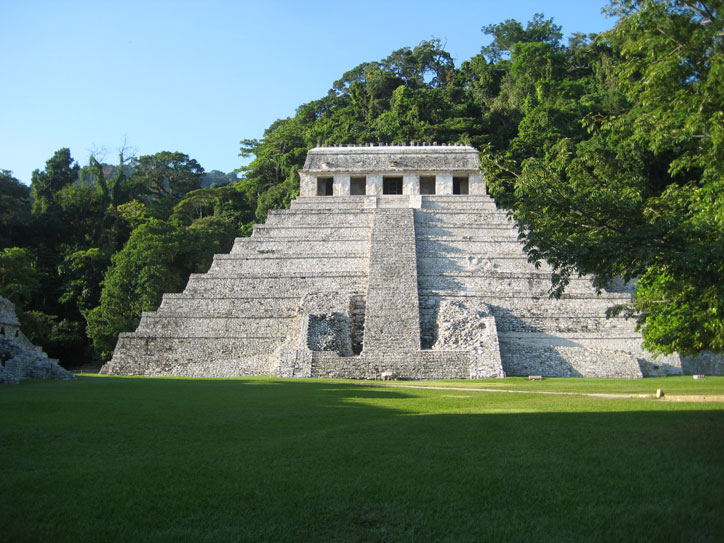
This is the templo de las inscripciones or temple of the inscriptions. The ruler Pakal built it to house his tomb at the very bottom of the temple. Palak was ruler of Palenque from 615 to 683 AD and is responsible for many of the temples and structures built in Palenque. His tomb is one of the best preserved and richest found in all of the Americas. Unfortunately the tomb itself is closed to visitors because the condensation from people’s breath and sweat was wreaking havoc on the limestone walls but the lid of the tomb as well as some of the offerings from inside (mainly made of jade) are displayed in the nearby museum.
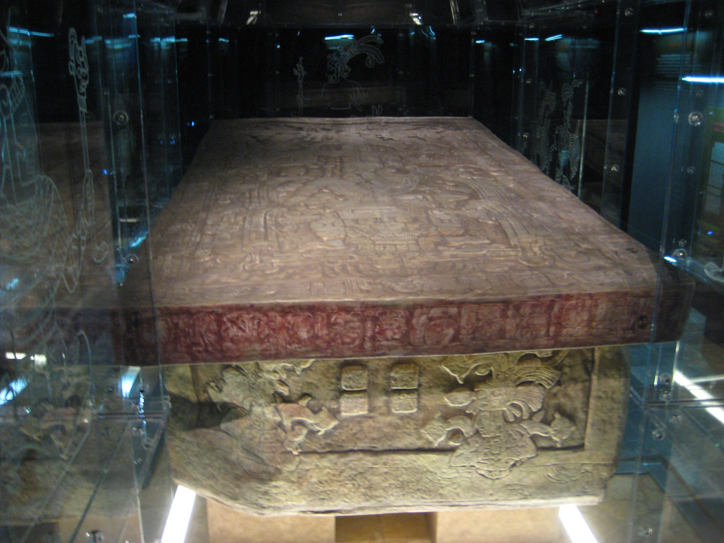
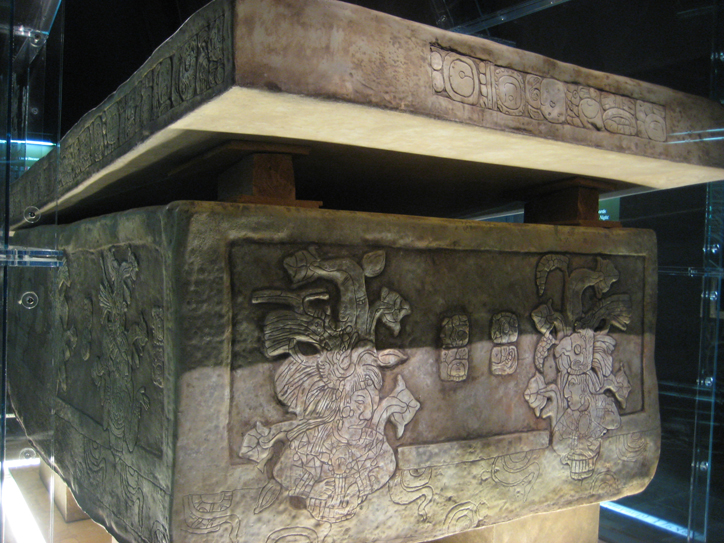
Palak also used the temple to announce the birth of his son, K’inich Kan B’ahlam, by putting up several stelae with inscriptions and reliefs. They are the 6 column-like slabs at the top of the temple. When the son was older, Palak instructed him to build his own temple on the exact spot where the sun beams hit after passing through the top of the temple of inscriptions. (And you thought you had it hard when your parents told you to clean your room…)
Unfortunately the temple of the inscriptions can’t be climbed so you cannot see the stelae on top but the museum has some very well preserved stelae on display. Here’s one example where you can see especially the deformed heads with the splendid head-dress (all members of the noble cast had their skulls deformed as babies) as well as some glyphs on the left side.
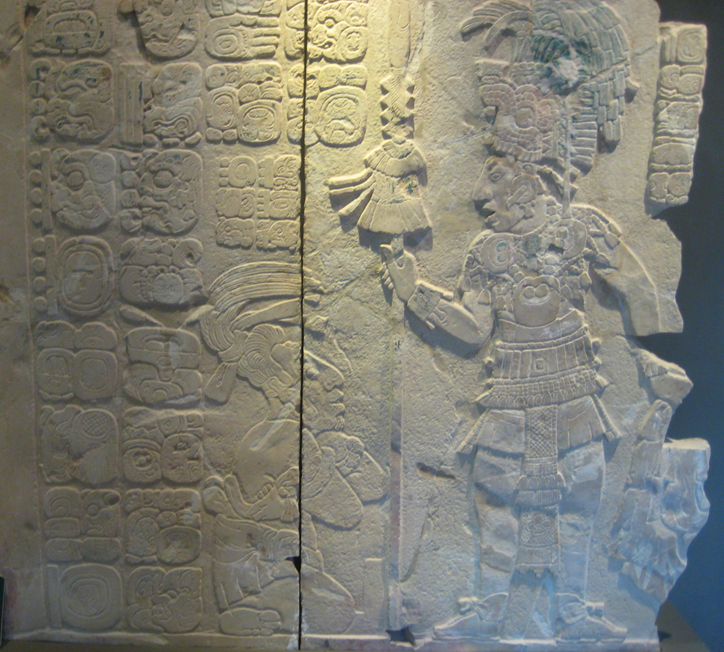
There were a lot of glyphs found at Palenque and about 70-80% have been translated so far.
The temple that K’inich Kan B’ahlam eventually built after Palak died is known as the templo de la cruz or temple of the cross.
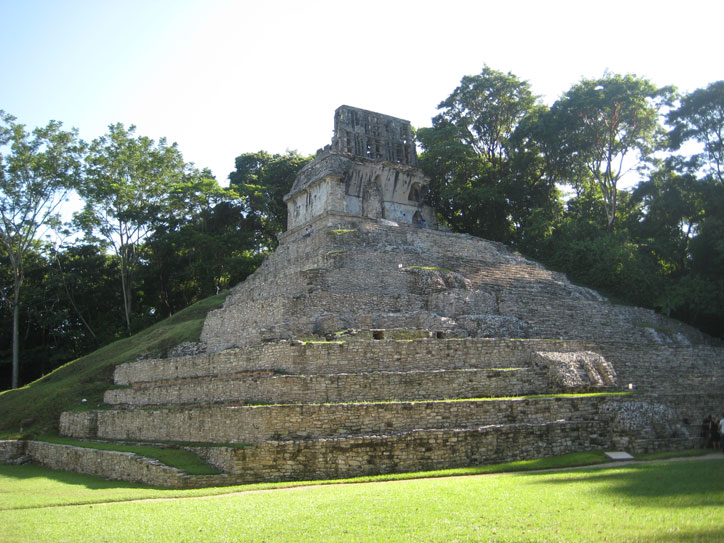
There are about a bazillion steps leading up to it (no really, I counted!) and climbing it requires some serious muscle and will power. Unless you have a scantily clad Russian girl in hot pants climbing in front of you, or so I am told…
The view from the top makes it all worth it though. You can see the other temples on the site as well as the plains of Chiapas in one marvelous sweeping vista.

And just to show that I wasn’t kidding about the steps, behold our faces dripping with sweat!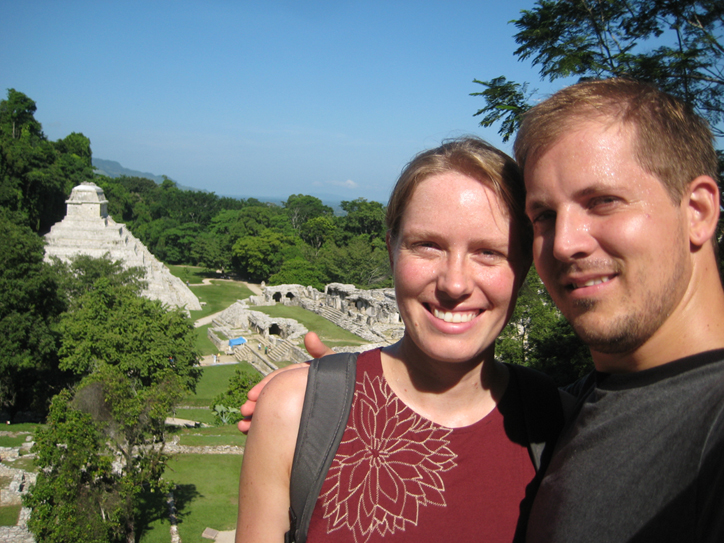
Here are some more interesting tidbits:
Because the Mayans didn’t want to upset the god of the winds when they put up walls, they added vents in the form of a T into the walls which can also be interpreted as someone standing with their arms wide open in a welcoming embrace.
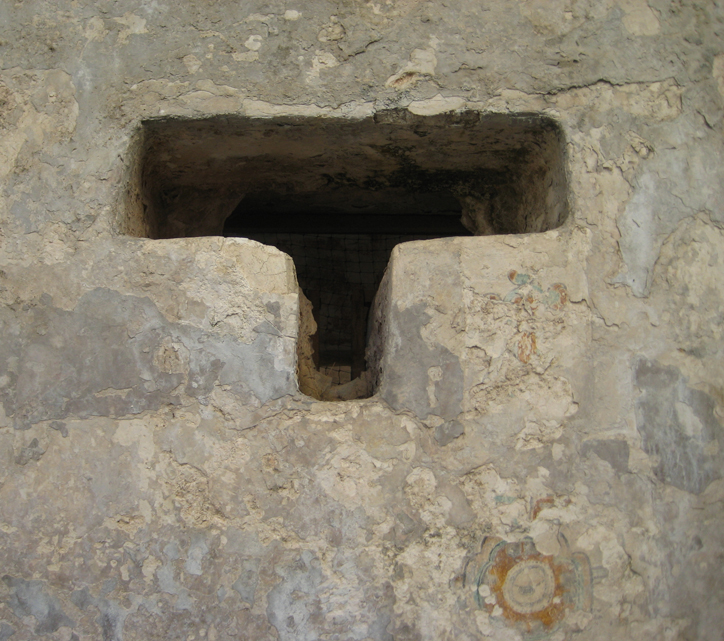
Also notice the small part of the painted decoration remaining on the façade. The whole palace used to be painted bright red and decorated with designs all over. Apparently they found over 9 different layers of paint; every few decades the walls were whitewashed and painted over with a new design. Just like putting up new wallpaper!
Here’s a nice example from the museum of what the colors looked like painted on the reliefs.

